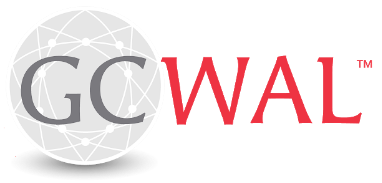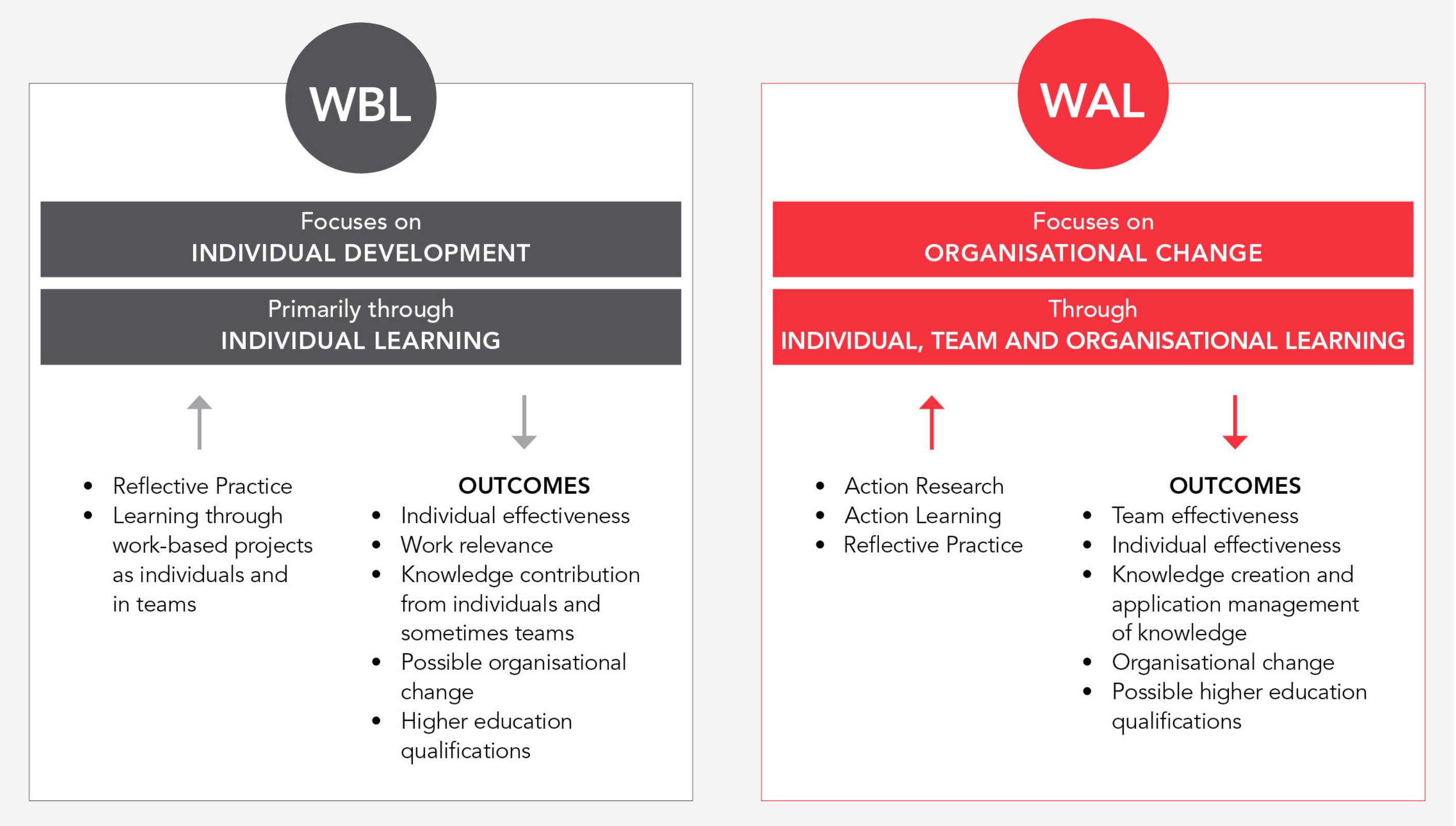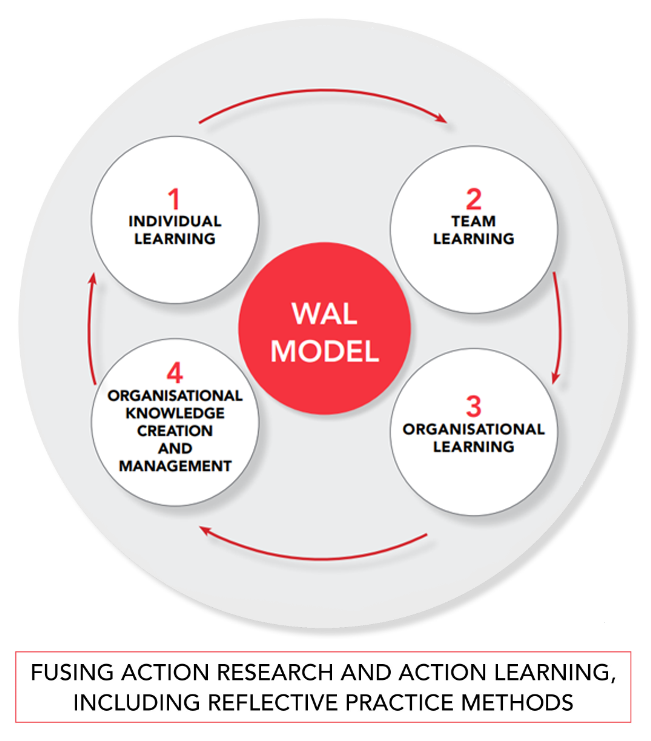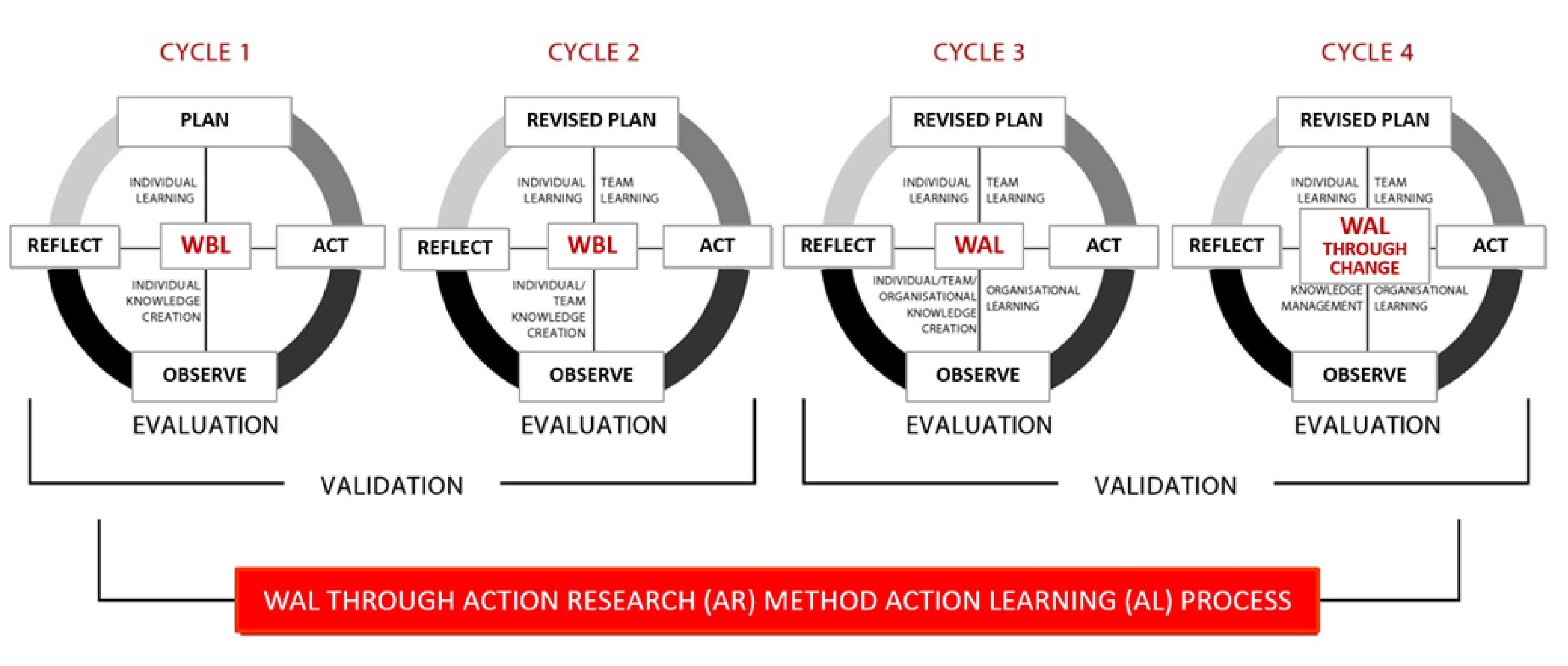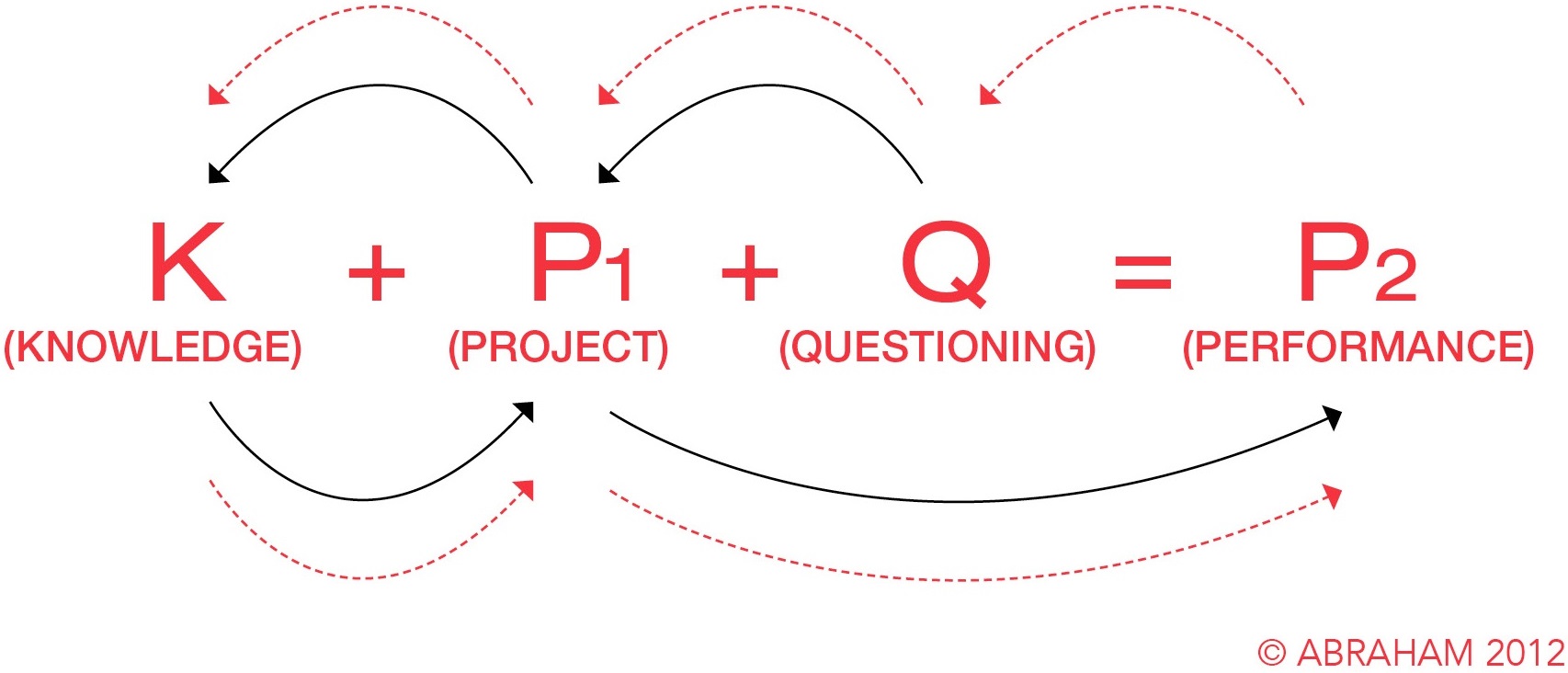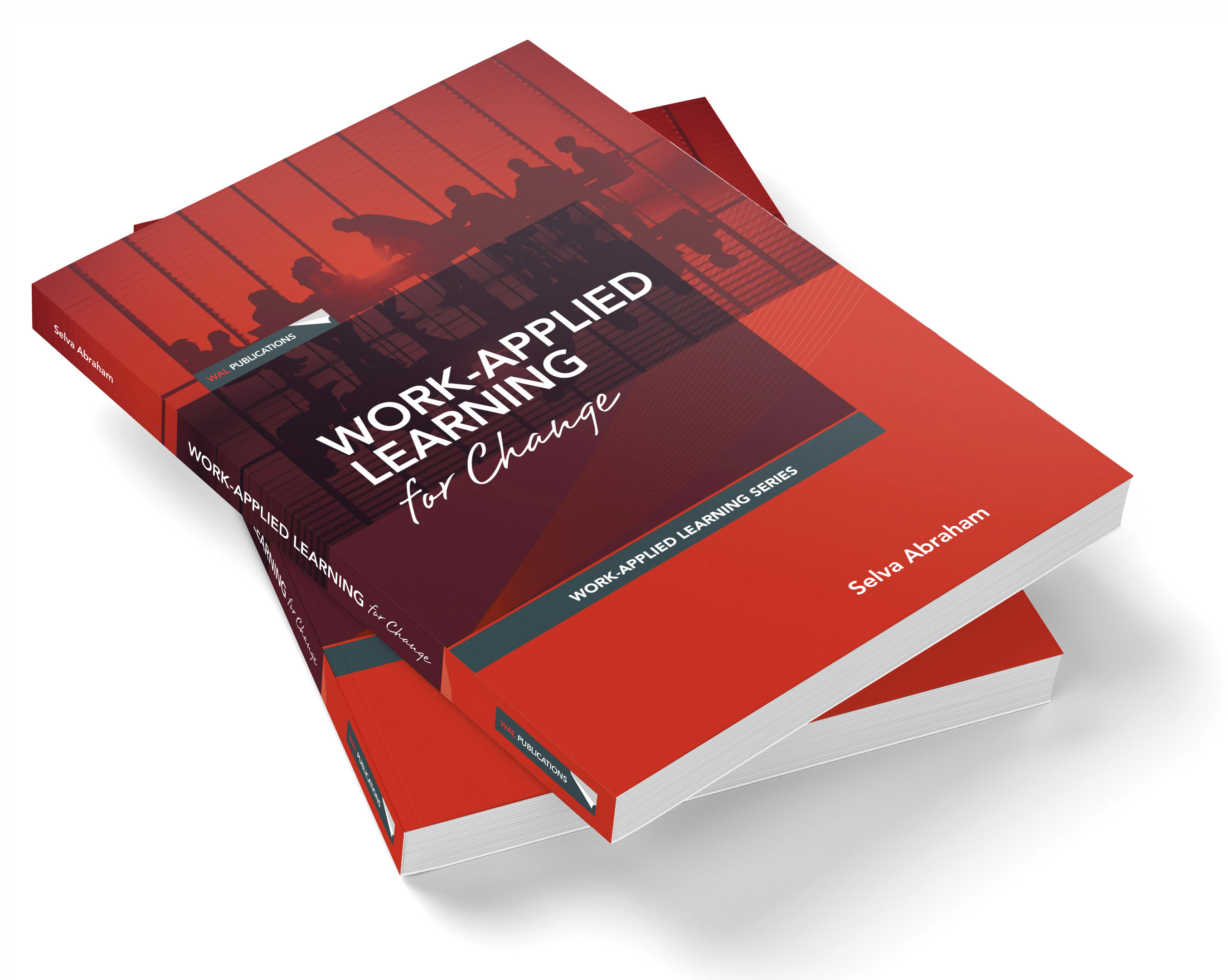The Work-Applied Learning(WAL) model recognises the workplace as the crucible of learning for change. It has been specifically developed for managers to learn, reflect, introduce change and be effective in their organisations or communities.
Work-Applied Learning is an extension of Work-Based Learning (WBL). Whereas WBL focuses on individual and team learning, WAL includes the features of WBL and goes further to enable organisational learning, resulting in the creation and management of organisational knowledge and change.
Diagram 1: shows a comparison between WBL and WAL. While learning in the WBL model almost exclusively occurs through work-based projects and reflective practice, the WAL model facilitates learning through action research and action learning, in addition to reflective practice. Both models enable individual effectiveness and departmental change.
